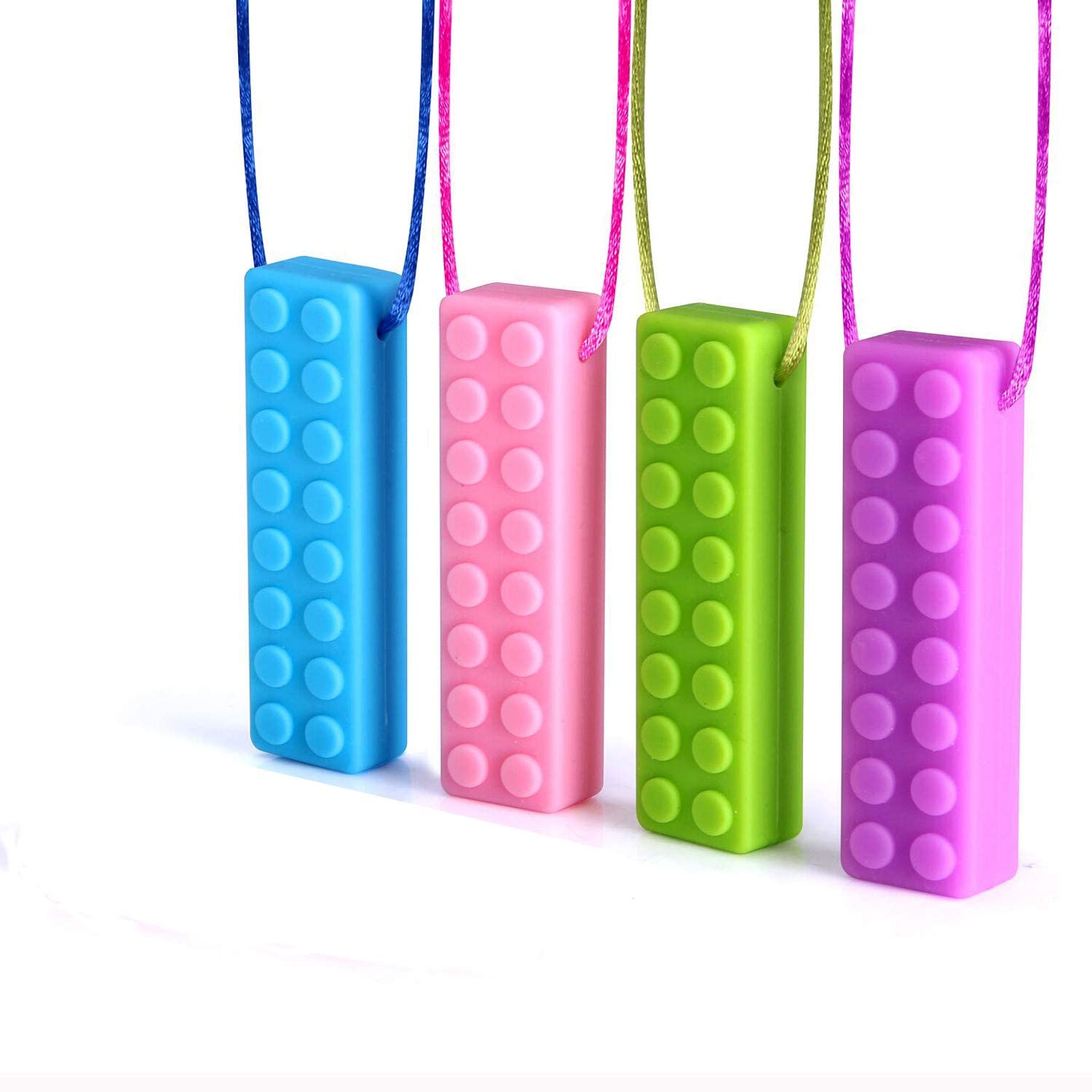It’s important to note that while chew toys can be beneficial for many children with autism, not all children will find them helpful or effective. Each child is unique, and their preferences and sensory needs can vary.
If you’re considering using chew toys for a child with autism, it’s a good idea to consult with a healthcare professional or occupational therapist who specializes in autism to ensure that the chosen chew toys are safe and appropriate for the child’s individual needs.
Here’s how Chew Toys benefit children with Autism and ADHD:
Sensory Stimulation: Many children with autism have sensory processing differences. They may seek out specific sensory experiences to help regulate their sensory systems. Chewing on a textured or firm object can provide oral sensory stimulation, which some children find calming and soothing.
Anxiety and Stress Reduction: Chewing can serve as a way to release tension and stress. Children with autism might use chew toys to redirect their anxious or agitated feelings into a repetitive and self-soothing action.
Focus and Attention: Engaging with a chew toy can help redirect a child’s focus and attention. Some children with autism might struggle with maintaining attention on tasks or situations, and having a chew toy can provide a constructive outlet for their sensory needs, allowing them to better engage in their surroundings.
Self-Regulation: Chewing on a toy can provide a form of self-regulation. When a child is feeling overwhelmed or overstimulated, they might use the chew toy to help them regulate their emotions and bring themselves back to a more balanced state.
Sensory Seeking Behavior: Some children with autism engage in sensory-seeking behaviors as a way to fulfill their sensory needs. Chewing on objects can fulfill the need for oral sensory input, similar to other forms of sensory seeking like rocking or spinning.
Communication: For nonverbal children or those with limited communication skills, chewing on a toy might serve as a way to communicate their needs or emotions. If a child is feeling distressed or uncomfortable, they might use the chew toy as a way to express their feelings.
Chew Toys for Ages Birth through 3

Chewy Toys for Children Ages 3-5
Chew items for Children ages 5 and up
Sensory Value packs
It’s important to note that while chew toys can be beneficial for many children with autism, not all children will find them helpful or effective. Each child is unique, and their preferences and sensory needs can vary.
If you’re considering using chew toys for a child with autism, it’s a good idea to consult with a healthcare professional or occupational therapist who specializes in autism to ensure that the chosen chew toys are safe and appropriate for the child’s individual needs.
How to use chew toys in the school system for children with Autism and ADHD
Using chew toys in the school system for children with autism and ADHD can be beneficial for sensory regulation and attention management. Here’s how you can effectively incorporate chew toys into the school environment:
Identify appropriate chew toys: Choose chew toys that are safe, durable, and designed specifically for chewing. There are many types available, including silicone chew necklaces, chewable bracelets, pencil toppers, and textured chew toys. Make sure they are non-toxic and meet safety standards.
Educate staff and students: Provide information to teachers, aides, and classmates about the purpose of chew toys and their importance for children with autism and ADHD. Encourage understanding and acceptance to avoid stigma or teasing.
Establish clear guidelines: Set clear rules for when and where chew toys can be used. For example, they might be allowed during independent work times, transitions, or other appropriate times when the child needs sensory input or focus support.
Create a sensory-friendly environment: Designate a specific area in the classroom where children can use their chew toys comfortably. Consider providing other sensory tools such as fidget toys, weighted blankets, or sensory cushions to create a calming and supportive environment.
Individualize usage plans: Work with each child to determine their specific sensory needs and preferences regarding chew toys. Some children may benefit from using them throughout the day, while others may only need them during certain activities or times of heightened stress.
Teach self-regulation skills: Teach children how to recognize their own sensory needs and self-regulate using chew toys appropriately. Encourage them to use the chew toys as a coping mechanism when feeling overwhelmed or anxious.
Monitor usage and effectiveness: Keep track of how often the child uses the chew toys and whether they are helping to improve attention, focus, or behavior. Adjust usage plans as needed based on observation and feedback from the child and school staff.
Collaborate with parents: Communicate regularly with parents or caregivers to ensure consistency between home and school environments regarding the use of chew toys. Share observations and discuss any changes or concerns related to their child’s sensory needs.
Address concerns or challenges: Be prepared to address any concerns or challenges that may arise, such as hygiene issues, safety concerns, or disruptions to classroom routines. Work collaboratively with school staff, parents, and the child to find solutions that meet everyone’s needs.
Promote acceptance and inclusion: Foster a supportive and inclusive school culture where all students, including those with autism and ADHD, feel valued and accepted. Encourage classmates to be understanding and respectful of their peers’ sensory needs and differences.
By implementing these strategies, chew toys can be effectively integrated into the school system to support children with autism and ADHD in managing their sensory needs and promoting success in the classroom.





















